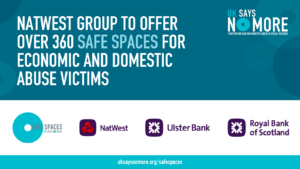Incidences of coercive control are prevalent but wider understanding of what it is and how it manifests is often little understood.

UK SAYS NO MORE’s contributor, Simran Dhillon breaks it down:
In 2020, coercive control was discussed frequently and was prominently referenced on Coronation Street with the portrayal of a coercive relationship. The produces of the show teamed up with Women’s Aid and Independent Choices to show common coercive behaviours that abusers use. They demonstrate how abuse can escalate over time, which has left viewers divided over the level of abuse being shown. But it sheds light upon this undetected yet common form of domestic abuse.
Coercive control is the most common form of domestic abuse. This form of abuse is not physical and therefore has historically been forgotten by the police and charities. Coercive control became a criminal offence in England and Wales in 2015. The government defines coercive behaviour as ‘an act or pattern of acts of assault, threats, humiliation and intimidation or other abuse that is used to harm, punish, or frighten their victim’.
There were 33,954 offences of coercive control recorded by the police in England and Wales in the year ending March 2021. This is compared with 24,856 in the year ending March 2020 and 17,616 in the year ending March 2019. The rise of coercive control offences over recent years may be attributed to improvements made by the police in recognising incidents of coercive control and using the new law accordingly. (ONS 2021).
Signs of Coercive Behaviour
Acts of a coercive nature tend to increase in frequency over the course of a relationship. The controlling and intimidating behaviours may be difficult to spot to the outside world but, covert actions often leave survivors dependent upon the abuser and in a state where they blame themselves. In many cases, coercive actions seem caring to outsiders and therefore make it harder to identify the crime. In reality, these actions break down the survivor’s self-esteem by undermining them emotionally and psychologically. Many survivors have been subjected to both coercive control and physical assault.
Some common examples of coercive behaviours are:
- Isolating you from friends and family
- Depriving you of basic needs, such as food
- Monitoring your time
- Monitoring you via online communication tools or spyware
- Taking control over aspects of your everyday life, such as where you can go, who you can see, what you can wear and when you can sleep
- Depriving you access to support services, such as medical services
- Repeatedly putting you down, such as saying you’re worthless
- Humiliating, degrading or dehumanising you
- Controlling your finances
- Making threats or intimidating you
The Difficulty of Leaving
Leaving the abuser is often hard and takes more than one attempt before the survivor is able to leave safely. There are different factors that prevent someone from leaving, but in many cases the abuser does not accept the survivor’s decision and tries to stop them leaving.
- Abusers may follow survivors, give them unwanted gifts or turn up at their home/ place of work.
- Abusers will often make unwanted contact via texts, calls and social media.
- Many survivors experience attacks on their reputation. This includes revenge porn, sending complaints to the survivor’s workplace and fabricating statements in court.
- Some abusers use child access rights to maintain contact with the survivor or request information from schools/ GPs under parental rights and, use family court to punish the survivor.
- Finally, some abusers claim poverty to avoid payments and do not disclose financial assets.
The factors listed above are some of the reasons that women and men struggle to leave. Moreover, in many cases it is more dangerous to leave, and this is why we need effective care and laws that help survivors take the steps to regain their lives, health and happiness.
Forms of Abuse That Should Be Considered as Coercive
A talk recently held at the University of West London covered ‘Shunning, “Honour” based violence and family disownment’. Shunning is the act of consistently avoiding or rejecting someone, and this can occur in different settings including but not limited to, cultural and religious contexts. It is a form of abuse that ostracises individuals from their community.
An important point raised by Diana Nammi, the founder of the Iranian and Kurdish Women’s Rights Organisation (IKWRO), Dr Savin Bapir-Tardy, a lecturer in Psychology at the University of West London and Aliyah Saleem, the co-founder of Faith to Faithless was the severity of the emotional damage inflicted upon individuals that are shunned.
According to Diana, the act of shunning is often considered to be a community issue, but she believes these abusive behaviours should be recognised as coercive control and more support should be given to communities that experience shunning.
If you think you have been affected by coercive control, visit UK SAYS NO MORE’s ‘get help’ page. We also have a page listing types of support to help discover more information of services available. In addition, download the free Bright Sky App for further information to help yourself and/or someone you know who has experienced domestic abuse.
1 The following information has been retrieved from the online book, ‘What is Coercive Control?’ by Jennifer Perry.


